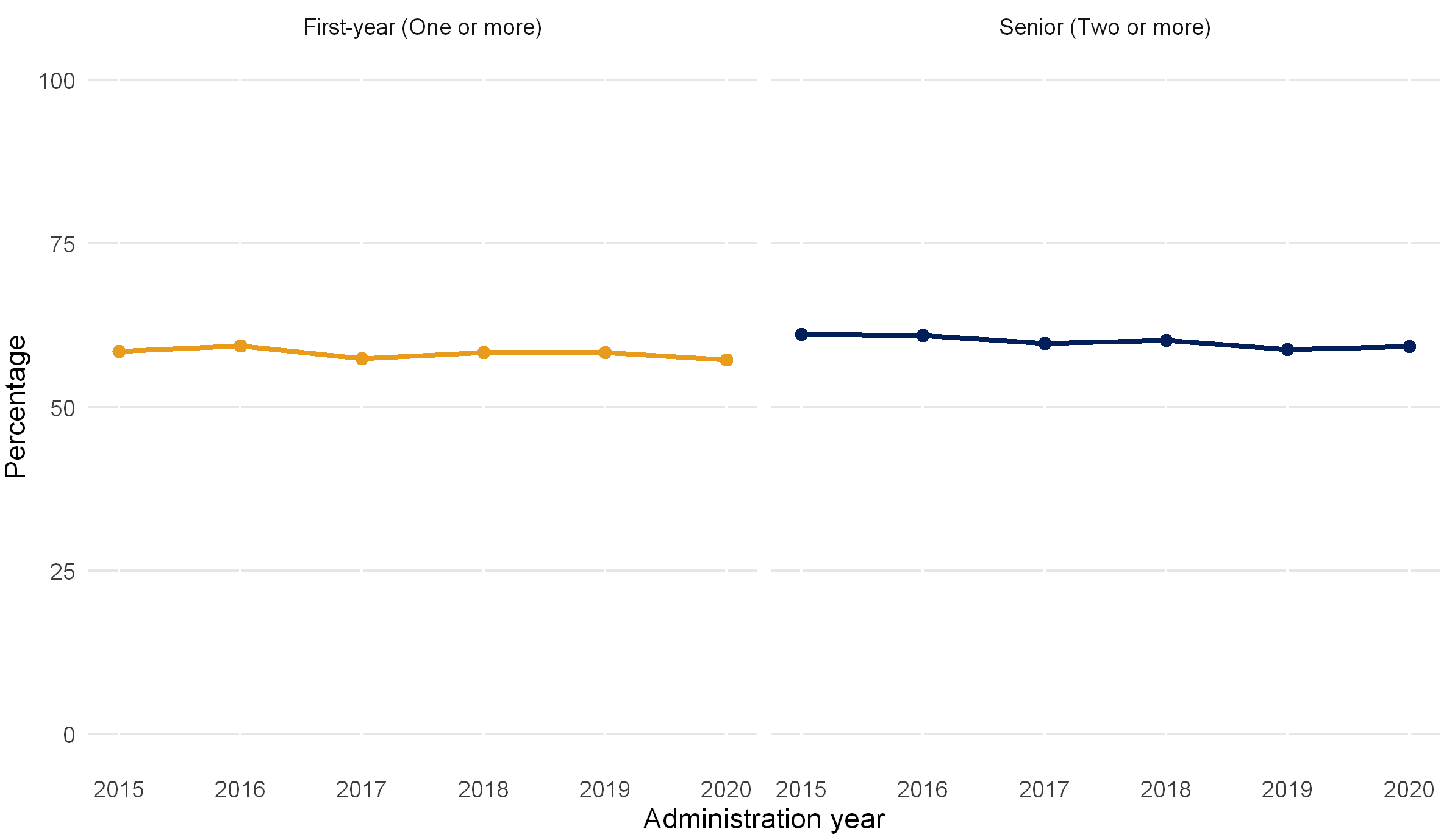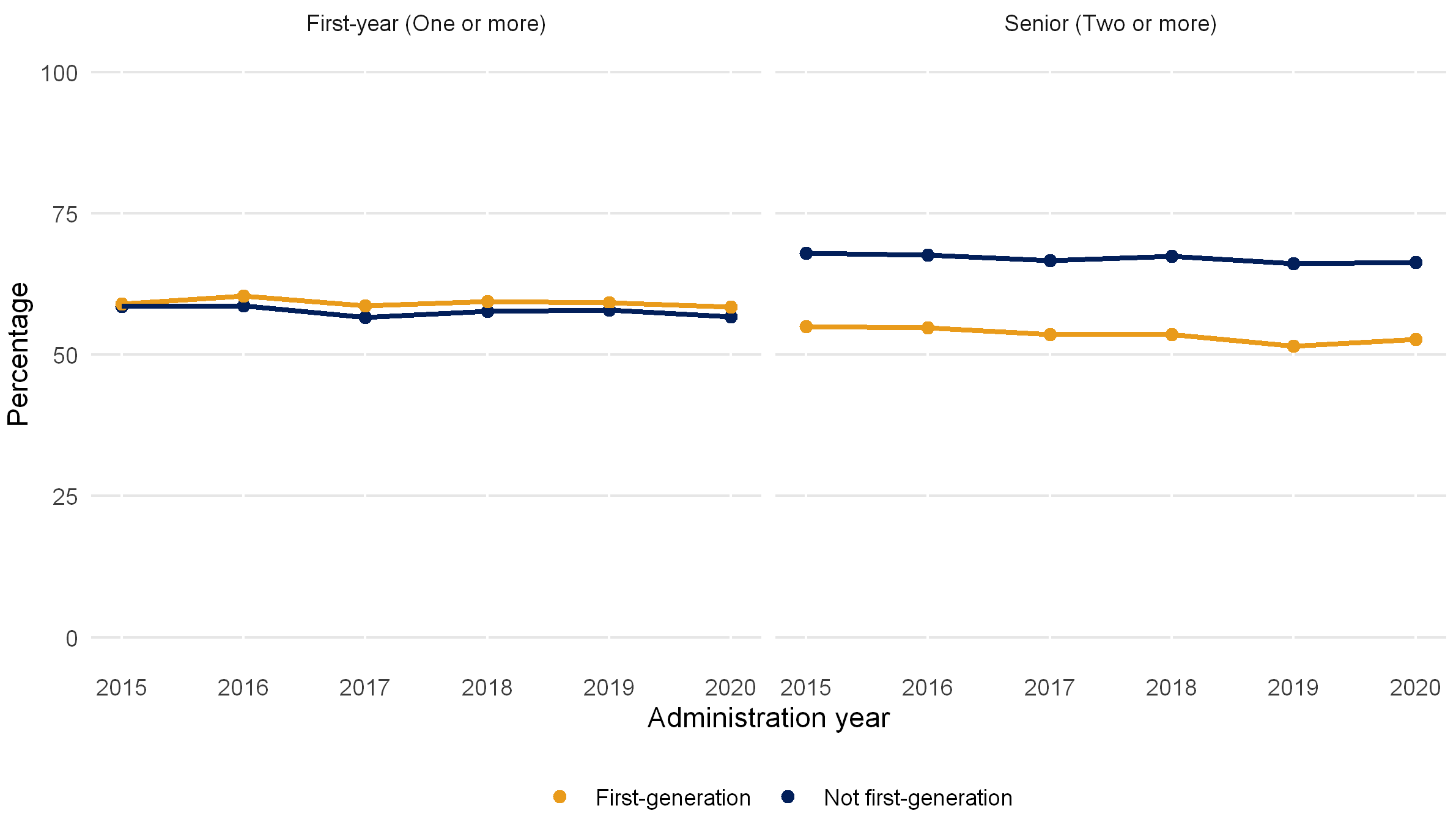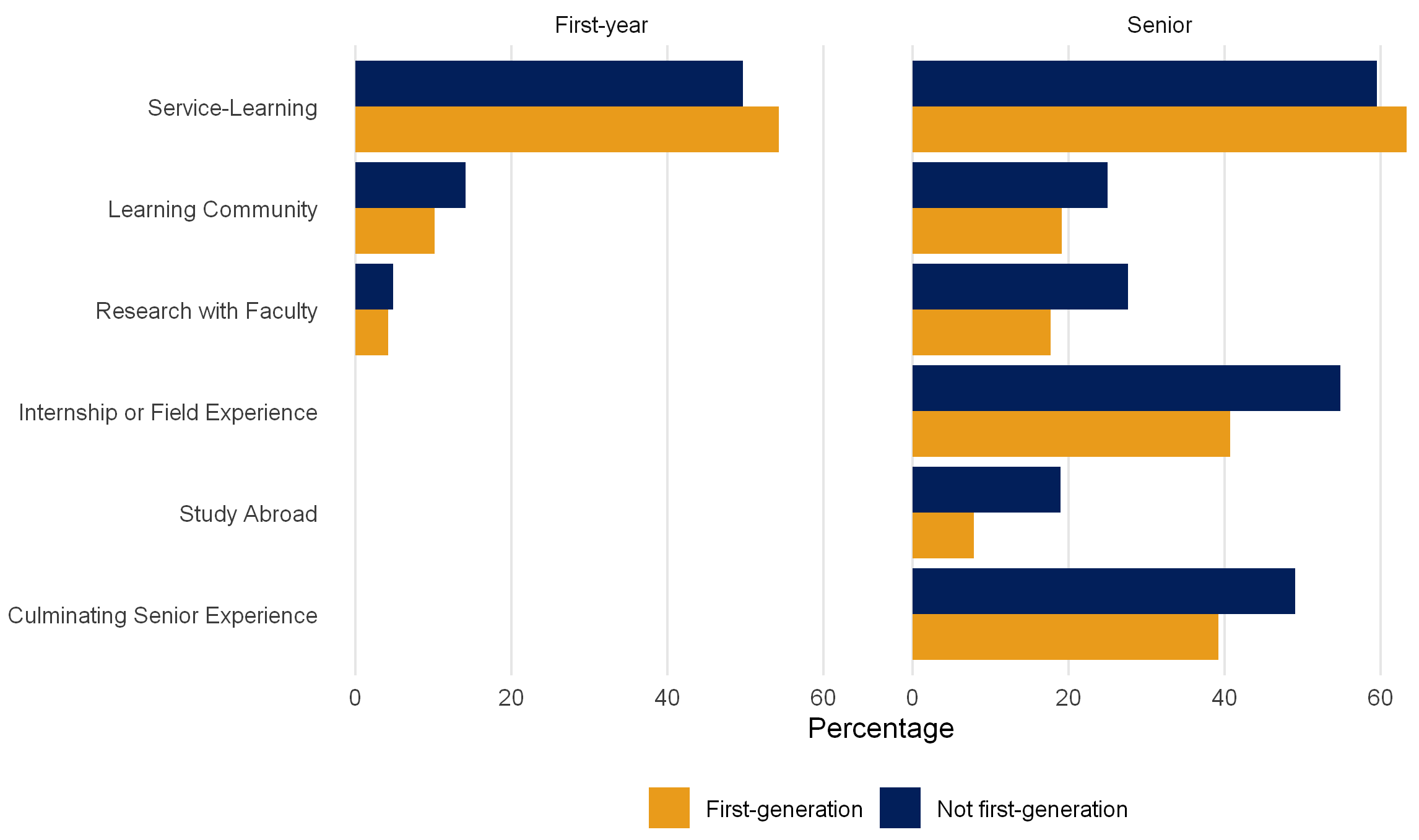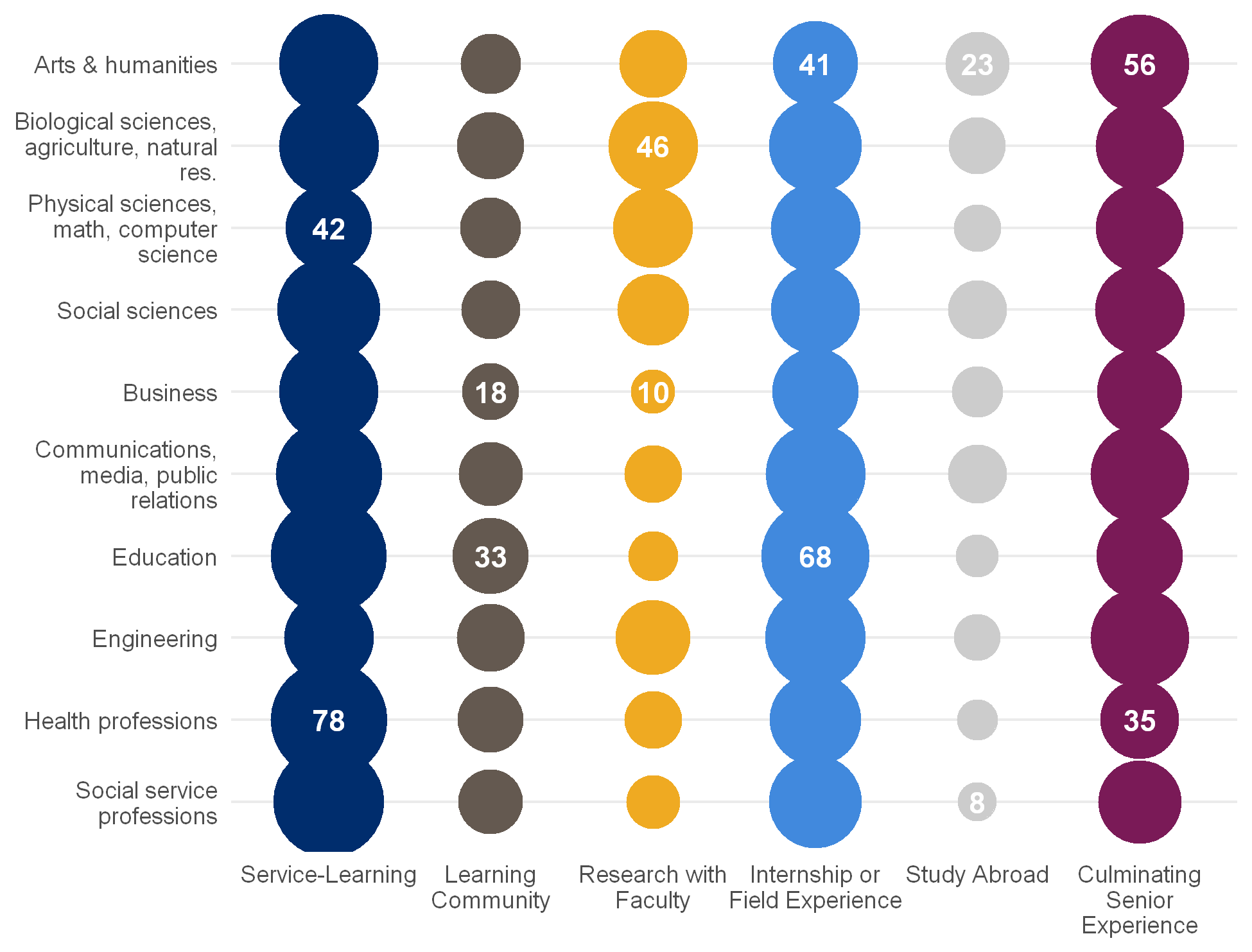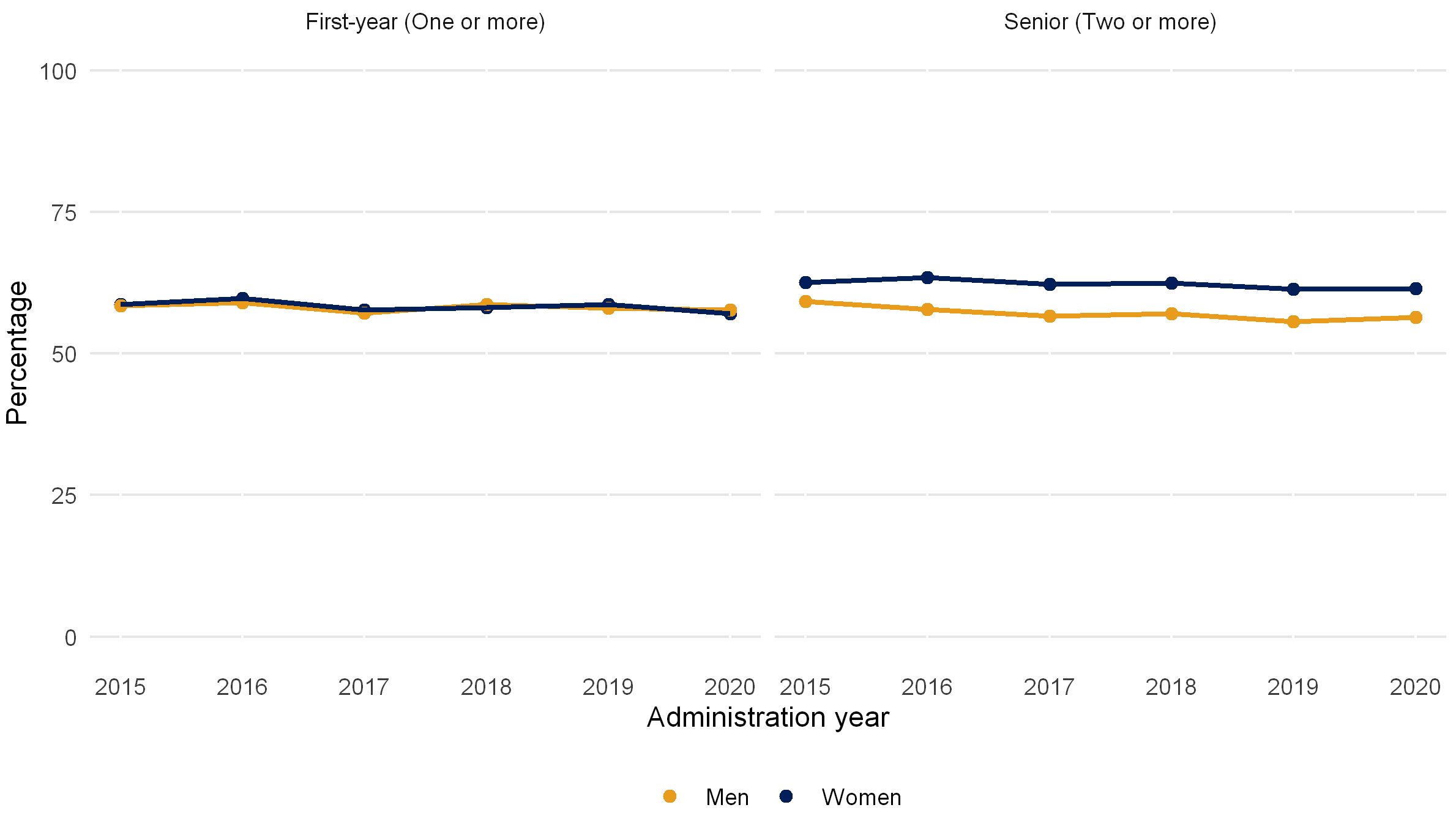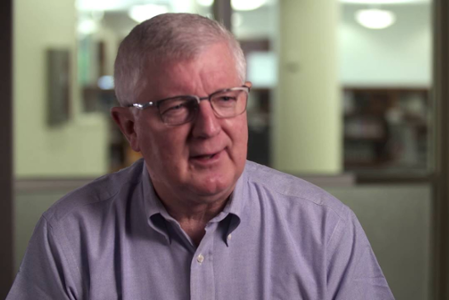High-impact practices (HIPs) represent select experiences that require significant time and effort from students, and are associated with desirable educational outcomes, from retention to important skills and habits of mind. Student participation in HIPs has remained strong and consistent over the past six years, but who participates—and which students achieve the recommended target of two HIPs during their college career—varies considerably.
HIP Participation Stable Across the Years
Over the past six NSSE administrations more than half (58%) of first-year students participated in at least one HIP, and 60% of seniors had completed at least two (Figure 1). Only about 15% of seniors did not participate in any of the six HIPs included on NSSE during their undergraduate career, and one in four seniors had only done a single HIP, suggesting room to improve participation rates.


